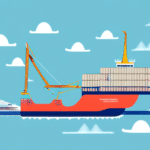Understanding the Meaning of Door-to-Door Service
Door-to-door service has gained significant popularity in recent years, primarily driven by the rise of e-commerce and the increasing demand for convenient delivery options. This service involves the direct transport of packages or items from the sender's location straight to the recipient's doorstep, eliminating the need for customers to visit a collection point. This article provides an in-depth analysis of door-to-door service, including its definition, operation, benefits, history, types, challenges, and future prospects.
What is Door-to-Door Service?
Door-to-door service is a delivery model where items or packages are picked up from the sender's location and delivered directly to the recipient's address. Unlike traditional mail or standard courier services that require recipients to collect their packages from designated points, door-to-door service offers a seamless and convenient delivery experience.
This service is particularly beneficial for individuals who may lack the time or resources to pick up their packages from post offices or collection centers. Businesses also find door-to-door service advantageous for ensuring timely and reliable delivery of products to their customers. Providers of door-to-door service include courier companies, shipping firms, and online retailers, many of which offer additional features such as package tracking and insurance for enhanced security.
How Does Door-to-Door Service Work?
The process of door-to-door delivery begins when a customer places an order and requests the service. The provider then schedules a pickup from the specified location. Once collected, the package is carefully handled and transported directly to the recipient's address, minimizing stops and ensuring swift delivery. Communication between the service provider and the customer regarding delivery schedules helps ensure convenience and reliability.
Beyond package delivery, door-to-door services extend to transportation solutions like airport transfers and shuttle services. In these scenarios, service providers pick up customers from their locations and transport them to their desired destinations, offering a hassle-free travel experience.
Benefits of Door-to-Door Service
- Convenience: Direct delivery to the doorstep saves customers the time and effort of traveling to pick up packages.
- Accessibility: Ideal for elderly, disabled individuals, or those with busy schedules.
- Security: Enhanced tracking and insurance options provide peace of mind for valuable or fragile items.
- Cost-Effectiveness: Consolidated deliveries can reduce transportation costs, and bulk shipment discounts benefit businesses.
- Environmental Impact: Fewer delivery vehicles on the road help lower carbon emissions, especially when providers use electric or hybrid vehicles.
Types of Door-to-Door Service
- Same-Day Delivery: Ensures packages are delivered on the same day they are picked up.
- Next-Day Delivery: Guarantees delivery by the next business day.
- Express Delivery: Offers expedited delivery within a few hours of collection.
- Standard Delivery: Provides delivery within a few days, suitable for non-urgent shipments.
Industries Utilizing Door-to-Door Service
Door-to-door service is integral to various industries, enhancing operational efficiency and customer satisfaction.
- E-Commerce: Companies like Amazon and eBay rely heavily on door-to-door services to deliver products directly to consumers.
- Healthcare: Delivery of medical supplies and prescription drugs ensures timely access to essential items.
- Food Delivery: Services such as Uber Eats and Grubhub use door-to-door models to transport meals from restaurants to customers.
- Retail: Brick-and-mortar stores expand their reach through direct home deliveries.
Choosing the Right Door-to-Door Service Provider
Selecting an appropriate service provider is crucial for ensuring a positive delivery experience. Consider the following factors:
- Delivery Times: Assess whether the provider can meet your required delivery schedules.
- Pricing: Compare rates and evaluate cost-effectiveness based on your needs.
- Tracking Capabilities: Ensure the provider offers reliable tracking tools to monitor your package.
- Reputation: Research customer reviews and ratings to gauge the provider's reliability and quality of service.
- Safety Measures: Verify that the provider adheres to strict safety protocols to protect your packages.
Challenges and Safety Measures in Door-to-Door Delivery
Door-to-door service providers face various challenges, including intense competition, managing operational costs, and maintaining swift and reliable delivery schedules. Additionally, ensuring the security of packages during transit is paramount.
To address these challenges, providers implement several safety measures:
- Specialized Vehicles: Using equipped vehicles to handle different types of packages securely.
- Insurance: Offering insurance options to protect against loss or damage.
- Advanced Tracking Systems: Utilizing real-time tracking to monitor package locations and statuses.
- Employee Training: Providing comprehensive training to staff to handle packages with care and adhere to safety protocols.
The Future of Door-to-Door Service
The future of door-to-door service looks promising, driven by advancements in technology and the continuous growth of e-commerce. Innovations such as drone deliveries and autonomous vehicles are set to revolutionize the efficiency and reliability of door-to-door services. Additionally, the integration of artificial intelligence and machine learning can enhance route optimization, reduce delivery times, and further decrease the environmental impact.
As consumer expectations evolve, door-to-door service providers will likely explore new models and technologies to meet the demand for faster, more sustainable, and more personalized delivery experiences.
Conclusion
Door-to-door service stands out as a highly convenient, secure, and efficient delivery option, catering to the needs of both individuals and businesses. With its roots tracing back to early 20th-century delivery methods, the service has evolved significantly, especially with the rise of online shopping. The continued advancements in technology promise to further enhance the capabilities and reach of door-to-door services. When choosing a provider, it's essential to consider factors such as reliability, cost, and safety measures to ensure a satisfactory delivery experience. Despite the challenges faced by service providers, the future of door-to-door delivery remains bright, driven by innovation and the ever-growing demand for convenient delivery solutions.






















